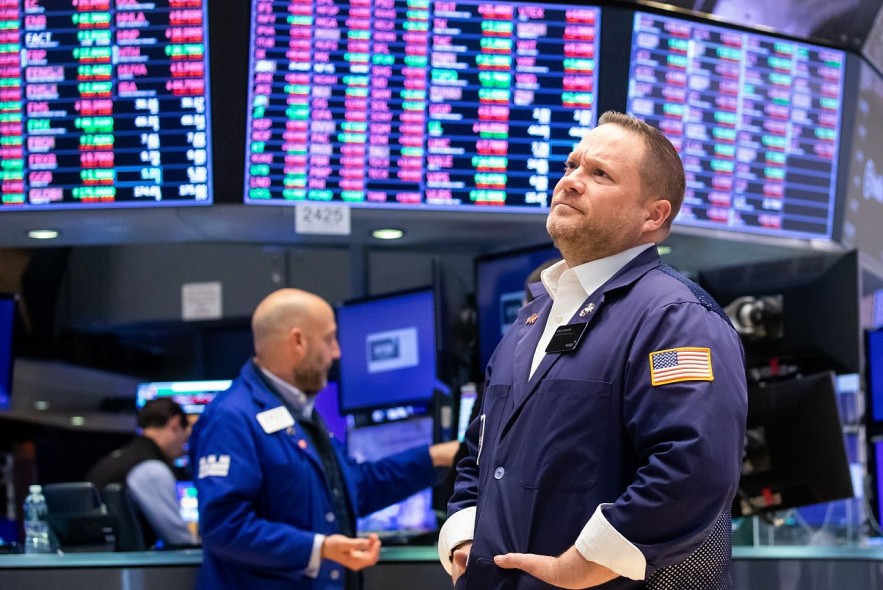Many financial assets will see a more volatile time ahead
Now clearly many financial assets are priced to anticipate a more volatile time ahead.

To date, 2024 has seen financial markets relatively becalmed, with only the August carry-trade unwind in the yen unsettling markets for a time. The fact that major central banks have started to ease policy has undoubtedly served to cushion asset prices. But now there’s a sense of foreboding given the raft of potentially market-moving events that started with the UK budget and roll through US payrolls, the US election, and the FOMC meeting next Thursday. In short, it looks like it's time to batten down the hatch in the face of the approaching storm.
Markets are clearly on edge. We have seen this in the UK as the gilt market, in particular, did anything but take Wednesday’s budget in its stride. Yields have risen sharply, and we have seen the futures market take out almost 50-bps of BoE easing through the end of next year. Sterling has also slipped, and equities are on the back foot. But the budget was largely as expected.
After all, all chancellors ‘leak’ the main budget measures in advance of the speech to deaden the surprise; something that earned Chancellor Reeves a rebuke from the Speaker of the House yesterday. So, why should an event that was largely anticipated produce a notably bad reaction?
Of course, some might argue that the budget was worse than anticipated. But we think that much of it is due to the fact that the market is just in a very fractious state at the moment, and not just in the UK. All markets are on edge because the outcome of the US election next week could upend market expectations about many things, like Fed policy, and damage the relative calm that we have seen in asset prices so far this year.
The fact that non-political factors, such as the flow of economic data, is also challenging orthodox thinking about central bank policy is just adding to the volatility. For not only have US data releases tend to come through a bit better than expectations and so question the extent to which the Fed may be able to cut rates. We have also seen euro zone data, such as GDP for Q3 and October inflation push above market expectations and so reel in rate-cut expectations from the ECB.
Now clearly many financial assets are priced to anticipate a more volatile time ahead. If we look at the euro/dollar, for instance, a currency that’s basically not moved for nearly two years; short-dated option pricing over the coming week puts good odds on a very disruptive move. One week euro/dollar volatility is up in the region of 11% having been around half of this level for much of the year. Even when the yen carry trade imploded in early August one-week euro/dollar vols only reached just over 7%.
The US election is undoubtedly the most volatility-inducing event that seems to lie ahead although the UK budget has proved that the presidential vote does not have the monopoly when it comes to volatility. What’s more, while much of the UK budget was leaked out in advance in recent weeks, that can’t happen with the US election. The outcome will be a surprise whatever happens. Of course, it looks as if the market is leaning towards a Trump victory given the way that betting markets have the former president well in front, but these markets have been wrong before, not least when Trump beat Clinton in 2016.
In addition, and as we’ve seen with the UK budget, even if the outcome is reasonably predictable beforehand, it does not rule out a sharp market reaction. And if the response to the UK budget has been quite large so far, you can bet that the reaction to the US election outcome will be a whole lot bigger. It leads us to think that, while financial market pricing, such as FX options, might seem as if it is anticipating in the right amount of risk over the coming week, Steve Barrow, Head of Standard Bank G10 Strategy suspects that asset prices will prove to be far more volatile. For instance, he argued that 10-year treasuries will rise to a 4.5%-5.0% range should Trump win, from 4.28% right now, and he actually thinks that the top end of this range could be seen quite quickly. The same goes for the lower end of a 1.0-1.05 range for euro/dollar that he expects to develop in the wake of a victory for Trump.








